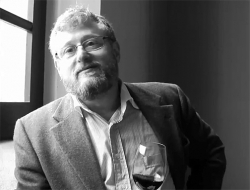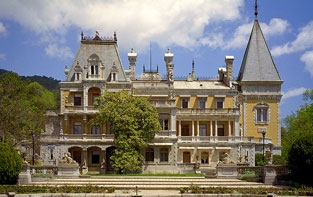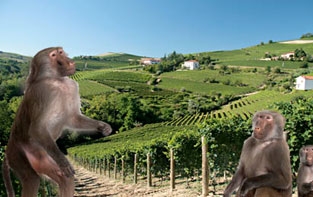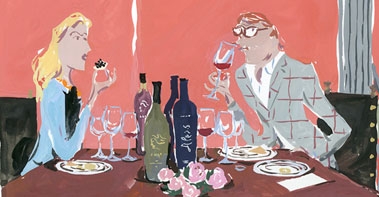Rob Moshein - Austin Wine Guy
Global Warming is Real and Will Impact the Global Wine Industry
April 09, 2013

A new paper was published Monday in the Proceedings of the National Academy of Sciences. In the new paper, the authors use 17 different climate models to anticipate which current wine areas will face increasing heat and loss of rainfall, and which areas will warm up sufficiently to be hospitable to viticulture.
The study predicts that under most climate models, as much as 47 percent of land suitable for wine grapes will be lost in the areas of Chile that have a Mediterranean-like climate. The study also indicates that 59 percent of wine country in western North America — mostly in California — will be severely stressed by heat and declining rainfall, and that 74 percent of such land in Australia will no longer be compatible with viticulture.
The equivalent figure for Mediterranean Europe is the most striking; 85 percent of currently suitable lands would become unfriendly to vineyards by 2050.
Lee Hannah, the lead author and a scientist at Conservation International said "The fact is that climate change will lead to a huge shakeup in the geographic distribution of wine production."
Robert Pincus, a scientist with the Cooperative Institute for Research in Environmental Sciences at the University of Colorado said in an interview "this is hard to argue with, this is robust.”
Think about the implications, Gentle Reader, if even something less than "worst case" scenario occurs. Bordeaux may no longer exist as a major wine producing region. Burgundy may be planting Cabernet Sauvignon. Champagne production will be supplanted by English sparkling wines and Germany will be a major producer of Red wine. Tuscany and the Veneto may no longer produce at all.
"Hogwash" you might say. 15 years doesn't prove "significant climate change". Yr Mst Hmbl & Obdt Svt would concur. However, he has also done more research and discovered the evidence of genuine climate change on the production of wine globally is without question real, and the evidence is clear.
Over a decade ago, a paper was published. Jones, G.V., and R. Davis, 2000. Climate influences on grape wine phenology, grape composition, and wine production and quality for Bordeaux, France. American Journal of Enology and Viticulture 51:249-261. The authors used FIFTY years of climate data, specific to Bordeaux, from 1945-1995 as the basis for their thesis. In the paper, the authors stated: "Changes in the climate of the Bordeaux region in the second half of the twentieth century were generally favorable for high-quality wine production. Further warming of Bordeaux's climate may not be beneficial for wine production. An increase in hot days during the flowering season was found to speed grape ripening, and the resulting longer growing season correlated with lower productivity and lower-quality grapes."
History has indeed proven this to be correct.
Truly Great Vintage Bordeaux years from 1900-2012:
1926
1945, 1947
1959
1961
1982, 1986, 1989
1990,1998
2005.2009, 2010
Look at the spread of dates, Gentle Reader. The last 30 years had almost twice as many "perfect vintages" as the previous 80 years! An old book on Bordeaux I found from the 1930's said that the rule of thumb for the truly perfect vintage in Bordeaux was once every 15 to 20 years. That used to be true, until 1982. Now they happen two or three times a decade! However, the warming trend appears to be continuing, and what will be the result in another 15 or 20 years with even warmer weather? It can't be good.
Not just Bordeaux, but in Germany as well. Back in 2007. The Economist published that "warmer average temperatures are threatening to redraw the wine map. Red-grape varieties such as cabernet sauvignon and merlot, traditionally grown in the south, will migrate northwards by 200-400km and up hillsides by 100-150 metres, said Hans Schultz of the Research Institute at Geisenheim in the Rheingau. "By 2040, cabernet sauvignon will flourish where Riesling does now." (emphasis added)
Just last March 2013 "Confronting a warming climate" was one of the main topics at a panel discussion at the recent Rieslingfeier that included Florian Lauer, Dorothee Ziliken (Forstmeister Geltz-Zilliken), Andreas Adam (A.J. Adam), and Thomas Haag (Schloss Lieser). Historically, Germany has been at the northern limits of wine production where the grapes struggled for ripeness. Now, warmer vintages are becoming more frequent as 2003, 2006, 2007, and the current releases from 20011 show. Thomas Haag observed that making wine today is “completely different” than when his father made the wines in the 60s and 70's."
What are the implications of the Texas Wine Industry? I am troubled. It is already hot and dry in Texas. Any further heat and drought will prove dire for Texas viticulture to be sure.
The Times they ARE a' changin' Gentle Reader. If you are a young Somm or wine drinker, under the age of 35 today, make good memories of the wines of today. There is a substantial chance that they will be substantially different when you are 70, that is, if they even still exist.
I can't end on "Cheers" with this one.
Rob Moshein
Austin Wine Guy






